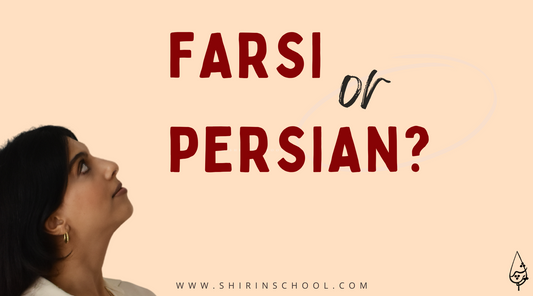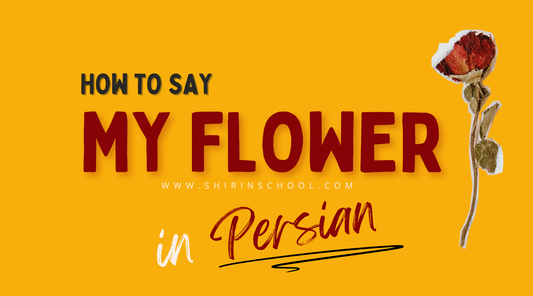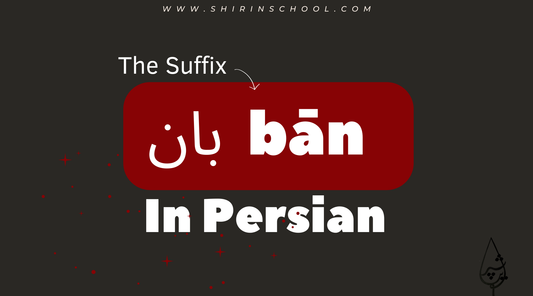Welcome to the first chapter of ‘Poetry Break’ /Zang-e She’r/ (زنگ شعر).
In Zang-e She’r, we’ll explore the correct pronunciation and meaning of verses from different Persian poets. The goal is to make these sessions short yet meaningful—perfect for those of you who want to memorize or dive deeper into the beauty of Persian poetry in bite-sized portions.
Since poetry is highly subjective and open to interpretation, I’ve provided a translation in the captions. I would be delighted to hear your thoughts and interpretations in the comments! Also, check out my blog for more detailed insights.
Explanation for some terms mentioned in the video:
-
Mesra' (مصراع): hemistichs; in Persian poetry, a mesra' is a single line of verse. Each beyt (couplet) consists of two mesra', which together form a complete poetic unit.
-
Beyt (بیت) meaning Verse : A beyt is the fundamental building block of Persian poetry. It consists of two mesra' (lines) that complement each other in meaning, rhythm, and rhyme. Persian poetry, especially ghazals, is structured around a collection of beyts that follow a specific meter.
So through this video we've covered 2 beyts and each beyt had two mesra' :)
-
Dastgāh-e Shur (دستگاه شور): This is one of the seven main musical modes in Persian classical music. Dastgāh-e Shur is deeply expressive and mystical, often associated with spiritual and introspective themes. Many Persian poems, including Mowlana’s ghazals, are traditionally sung in this mode, as its melodies enhance the emotional and meditative depth of the poetry.
Rumi or Mowlānā? Which one is Correct?
The name “Rumi” became widespread because "Rūm" referred to Anatolia (modern-day Turkey), where he lived much of his life. His mother tongue was Persian.
Mowlānā was born in Balkh (present-day Afghanistan, then part of Greater Iran), though some sources suggest Wakhsh (now in Tajikistan) as an alternative birthplace.
It's important to note that modern Turkey did not exist before Atatürk (1923). During Rumi’s time, Anatolia was ruled by the Seljuk Empire, and Persian was a dominant literary and administrative language. Even during the later Ottoman Empire, Persian remained a prestigious language, and many Ottoman sultans composed poetry in Persian.
First Verse:

Second Verse:
 These first two verses beautifully explore the contrast between the limits of reason and the infinite power of love. In simple terms, they reveal how love opens paths and perceptions that reason cannot imagine. Even experiences that may seem painful or difficult to logic feel like lush gardens to lovers—realities far beyond what reason can grasp.
These first two verses beautifully explore the contrast between the limits of reason and the infinite power of love. In simple terms, they reveal how love opens paths and perceptions that reason cannot imagine. Even experiences that may seem painful or difficult to logic feel like lush gardens to lovers—realities far beyond what reason can grasp.
Watch the video for learning the right pronunciation and in-depth explanation.
Summary of Themes:
-
Veils and Perception: People who are not in love are limited by veils of illusion and suffering, while lovers perceive the beauty and boundlessness beyond these veils.
-
Dual Tools of Understanding: Love and reason are both instruments of perception, but love is capable of unveiling dimensions inaccessible to reason.
The Path of Love: Love offers a transformative journey that breaks through barriers of logic and limitation, leading to spiritual enlightenment and fulfillment.
Who’s Neda Shahsavar?
Neda Shahsavar is an independent Iranian singer specializing in Persian classical vocal music (آواز سنتی ایرانی)—a deeply expressive and intricate art form that requires years of dedication and mastery.
She lives in Shahsavār (Tobnekabon), a beautiful city in northern Iran, nestled between the Caspian Sea and the lush Hyrcanian forests. Known for its rich cultural heritage and breathtaking landscapes, Shahsavar has long been a place where art and nature intertwine.
Follow Neda:

In this video, Neda sings the poem in Dastgāh-e Shur (دستگاه شور), one of the most emotional and soulful modes in Persian classical music. Singing and teaching Persian classical vocal music is no easy feat—it demands a profound understanding of radif (the Persian repertoire), intricate vocal techniques, and the ability to convey deep emotion through sound. Neda is one of the talented voices keeping this tradition alive, passing it on to students—including myself.

Through this blog, I send out a heartfelt prayer: may the day come when we can all gather freely to attend her concert and experience her voice in its fullest expression. I dream of a free Iran, where the true voices of its children can soar without restraint.
About Zang-e She'r (Poetry Break)
زنگِ شعر
ShirinSchool’s zang-e she’r زنگ شعر is committed to being a free river (although it may be narrow) that brings you to the bigger rivers and ultimately to the ocean of Persian Heritage. So feel free to contact me if you have any ideas. I’d love to do what i can do. I really do enjoy learning and exploring Persian and always remain an explorer as long as I’m on earth.

Join #barayeto Community
If you're curious about Persian culture and expressions of love in this beautiful language, don’t miss my e-book Baraye To—a warm, fun guide with 250+ phrases for anyone who’s fallen in love with an Iranian.
Baraye To covers a comprehensive list of expressions to enrich your conversations with loved ones.
Click here:

Join #barayeto Community
Learn, Enjoy, Connect
باسپاس و مهر
شیرین
💌 Want a monthly dose of Persian romance, culture, and language?
Sign up for my email newsletter and never miss a bloom. 🌷
Resources:
Helped me with interpretations: https://civilica.com/note/1235/






